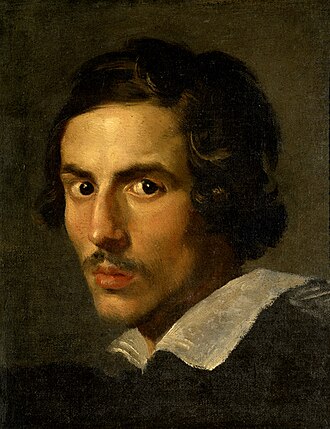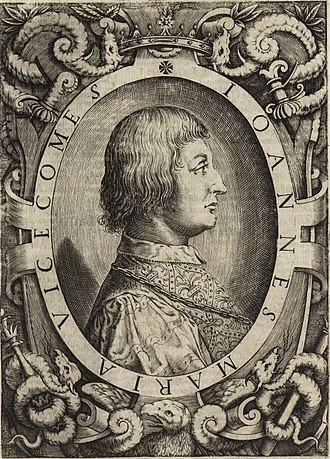Discover Your Roots
SIGN UPDiscover Your Roots
SIGN UPGian is a male name of Italian origin, derived from the name Giovanni. Its meaning, "God Is Gracious," reflects its religious significance. This name has been associated with notable individuals such as Italian painter Gian Paolo Lomazzo, sculptor Gian Lorenzo Bernini, and Grand Duke of Tuscany, Gian Gastone de' Medici, among others. Additionally, Gian is also the alternate name for the city Giyan in Iran and a character in Doraemon, Takeshi Goda. The name Gian holds a strong historical and cultural significance, and it continues to be a popular choice for parents seeking a name with religious connotations and Italian heritage.

Gian Lorenzo Bernini, an Italian sculptor and architect, was a prominent figure in the world of architecture and the leading sculptor of the Baroque style. He was also a painter, playwright, and a versatile designer of decorative art objects. Born in Naples in 1598, he was recognized as a prodigy at a young age and received praise from powerful patrons, including Pope Paul V, who predicted that he would be the "Michelangelo of his age." Bernini's talent and versatility extended beyond sculpture, encompassing architecture and painting, allowing him to create a cohesive synthesis of the visual arts. His works, characterized as perfect expressions of the Counter Reformation Catholic Church, reflect the spirit of 17th-century Rome and its religious-political power. Bernini's legacy far outshines other sculptors of his generation, and his influence on art and architecture remains inordinately powerful. His artistic production should not be reduced simply to instruments of the papacy and its political-doctrinal programs, as he was a man of his times, deeply religious, and a true genius in his craft.

Gian Marco Javier Zignago Alcóver, born on August 17, 1970, is a renowned Peruvian musician and actor who has achieved significant success in the Latin music industry. He is a three-time Latin Grammy Award winner for the Best Singer-Songwriter Album, earning the prestigious accolade for his albums "Resucitar" in 2005, "Días Nuevos" in 2011, and "20 Años" in 2012. Additionally, Gian Marco was honored as a UNICEF Goodwill Ambassador in Peru, highlighting his commitment to using his influence for charitable causes.Coming from a family deeply rooted in the arts, with his mother, the Peruvian actress and singer María Regina Alcóver Ureta, and his late father, the esteemed Peruvian composer and singer Javier Óscar Florencio Zignago Viñas, known as Joe Danova, Gian Marco was immersed in music from a young age. His childhood was infused with exposure to the world of entertainment, shaping his passion and talent for music.Gian Marco's journey in the music industry began with early performances on television and marked by the release of his debut album "Gian Marco: Historias" in 1990, which included hits such as "Domitila" and "Mírame." Subsequently, he continued to achieve success with subsequent albums, further solidifying his reputation as a gifted musician and songwriter.His international success led

Gian Maria Visconti, also known as Giovanni Maria, was the second Visconti Duke of Milan. Born in 1388, he was the son of Gian Galeazzo Visconti and Caterina Visconti. His birth was celebrated as the long-awaited heir to the Visconti dynasty, and his arrival helped solidify his father's rule over Milan. After his father's death, Gian Maria assumed the title of duke under his mother's regency. However, the Duchy of Milan soon disintegrated, leading to his assassination in 1412. He married Antonia Malatesta of Cesena, but they had no children. Gian Maria's life and tragic end have been immortalized in literature, with references to him found in works such as "Bellarion" by Raphael Sabatini. His story is a captivating glimpse into the tumultuous history of Renaissance Milan.References:- Bartlett, Kenneth (2019). The Renaissance in Italy: A History.- Hoeniger, Cathleen (2006). "The Illuminated "Tacuinum sanitatis" Manuscripts from Northern Italy ca. 1380-1400: Sources, Patrons, and the Creation of a New Pictorial Genre".- Jones, P.J. (1974). The Malatesta of Rimini and the Papal State.These references provide further insight into the historical context and cultural significance of Gian Maria Visconti's life.

Gian Vittorio Baldi (30 October 1930 - 23 March 2015) was an influential figure in the Italian film industry, known for his work as a film producer, director, and screenwriter. Born in Bologna, Italy, he studied Social Science at Sapienza University in Rome and later honed his craft at the Centro Sperimentale di Cinematografia. Baldi gained recognition early in his career, winning the Golden Lion for best short film at the Venice Film Festival with his work "Il pianto delle zitelle" ("The Crying of Spinsters"). Throughout his career, he directed thought-provoking independent films that often reflected social criticism. His film "Fuoco!" was featured in the main competition at the 29th Venice International Film Festival, and "L'ultimo giorno di scuola prima delle vacanze di Natale" (aka "The Last Day of School Before Christmas") was showcased at the 1975 Cannes Film Festival. In addition to his directorial work, Baldi made significant contributions as a producer, collaborating with renowned filmmakers and producing award-winning films. Later in life, he transitioned to winemaking, creating notable wines such as the Ronchi di Castelluccio. Baldi's legacy continues to be celebrated in the world of cinema and viticulture.References: - Antonio Maraldi (2004). Il cinema di Gian Vittorio Baldi: regista

Gian Antonio Lazier, also known as Ioannes IX Antonius I Angelus Flavius Comnenus Lascaris Palaeologus, was an 18th-century Italian impostor and pretender. Claiming to be the last legitimate descendant of the Angelos, Komnenos, and Palaiologos dynasties of the Byzantine Empire, Lazier styled himself as 'prince of the line of the empire of the east'. Despite being born of humble origins in the Aosta Valley in Italy, Lazier propagated his connections to former Byzantine royalty and aspired to rule vast territories of the Byzantine Empire. Throughout his life, he engaged in various occupations, including shoemaking, monastic life, and hotel-keeping. In 1707, he faced condemnation by the Inquisition for attempting to marry while already married. Moving to Brussels, Lazier continued to publicize his claims and operated out of Vienna as a pseudo-Byzantine emperor in exile until his death in 1738. His activities, initially supported by the Holy Roman emperor Charles VI, revived interest in the Byzantine Empire in Western Europe and influenced crusading sentiments. Despite being exposed as a fraud in 1724, Lazier maintained his claims until his death, leaving behind a landless and imaginary empire. His story is intertwined with the historical context of the fall of the Byzantine Empire and the survival of its descendants.The Byzantine Empire, the medieval continuation of the
All images displayed on this page are sourced from Wikipedia or Wikimedia Commons.We use these images under their respective Creative Commons or public domain licenses. Wherever applicable, author attributions and license information are provided. If you believe an image is used incorrectly or outside its license terms, please contact us so that we can review and correct the issue.